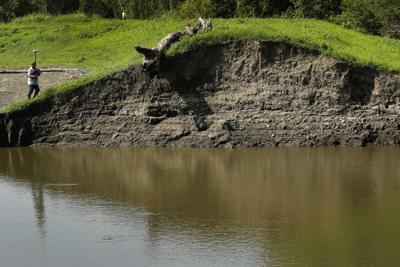By 2030, Indianapolis may need to generate up to 20% more electricity in the summer months based on a worst-case global warming scenario, researchers said in a recent report.
In a best-case scenario, the need may be closer to a 12% increase among the June to September months.
The increase is larger than many previous estimates because the study used a model developed through Purdue University that takes into account consumers using electricity and water in the same period.
Researchers also forecasted between a 5 and 8 percent growth in demand for Indianapolis water under both scenarios.
The predictions are likely to prove true if no significant conservation and efficiency measures are taken, researchers said.
The new model projected that the Midwest will be using 19% more electricity and 7% more water.
And, of course, water and electricity are interconnected with every Hoosier home. Think of running a dishwasher or simply heating water.
That’s why this group of researchers is urging that water and electric utilities consult each other in conservation measures.
As an example of that need, researchers cite a study of efforts in Phoenix, Arizona, to encourage residents to grow drought-tolerant plants to conserve water. That led to increased electricity use which meant more water being used.
More droughts may be coming in climate change scenarios. Corn yields are expected to decline by 16 to 20 percent by mid-century due to heat and drought stress, according to the Purdue Climate Change Research Center.
Climate scientists have predicted that the earth could warm by 1.5 degrees Celsius by 2030 and cross the 2.0-dgreee Celsius threshold by 2055.
Adding to local woes may be the Hoosier reliance on coal-fired plants for electricity, a source that is being replaced in some sectors by wind and solar power.
“Using more coal will contribute to global warming which could further exacerbate demand growth. To ensure the resilience of the grid most sustainably both demand-side management and higher renewable integration are needed,” Roshanak “Roshi” Nateghi, assistant professor of Industrial Engineering and an author of the study, told CNHI.
The model used by researchers did not take into account population growth or technological shifts, such as increased electric vehicle use.
Nateghi’s team partnered with Rohini Kumar, a postdoctoral researcher at the Helmholtz Centre for Environmental Research – UFZ in Leipzig, Germany, to develop the model used in the study.
Previous studies of the impact of climate change on these two necessities have been based generally on temperature and precipitation.
The recently-released study of the future demand for water and electricity combined those variables with humidity, wind speed and large-scale weather phenomena such as El Nino, among others.
“This study is one of the first to include these variables, as most studies tend to focus only on the temperature and precipitation impacts,” Nateghi told CNHI.
Indianapolis was among six included in a study of Midwestern cities including Chicago and Columbus, Ohio.
Chicago, for one, may have to generate 12% more electricity and 4% more water per person during each summer month. That’s under the best-case 1.5 degree Celsius threshold.
If a 2.0 degree rise is reached, then the worst-case scenario is a 20% increase in electricity use and a 6% increase in water use.
“In the future, there could be significant shortages in water and electricity supply because these models have been significantly underestimating what the actual demand would be,” Renee Obringer, the first author on the study and a Ph.D. candidate in environmental and ecological engineering at Purdue, said in a statement.
The study was funded by the National Science Foundation and the Purdue University Center for the Environment.
The report comes as Indianapolis Power & Light released a 20-year outlook.
Climate scenarios have led AES Corp., the parent company of Indianapolis Power & Light, to pledge to reduce carbon intensity 70% by 2030 compared to 2016 levels.
In 2018, AES reported, “The third-party climate scenarios estimate that, in the 1.5 to 2 degree Celsius scenario, global wind and solar capacity will need to grow by approximately 8% and 10% per year, respectively, between 2016 and 2040. This is more than double the wind and solar capacity projected to be built by 2040 in the Business as Usual Scenario (3-6°C).”
Last year, Citizens Energy Group, which provides Indianapolis water, said it predicts a 0.65% growth in annual demand amounting to 43 million gallons a day of additional supply needed over the next 25 years. Recently, Citizens announced plans for the development of Citizens Reservoir, an 88-acre quarry that will store over 3 billion gallons of water, among other projects.
On average, all Indianapolis homes use a total of 6.14 million gallons of water daily. Also, all Indiana homes combined use 493 million gallons of water daily. The average resident uses 76 gallons daily at home, according to the National Environmental Education Foundation.
In February, Indiana University’s Environmental Resilience Institute predicted that climate change was expected to threaten Indiana’s water supply.
“Under a changing climate, rising temperatures will increase soil moisture and hydrological drought, meaning Indiana’s soil and streams will likely be drier for longer periods of the year in future decades,” University of Wisconsin-Stevens Point Assistant Professor Jennifer Dierauer, a former IU post-doctoral researcher and lead author of the paper, said in a statement.
Scientists have projected that Indiana is likely to experience more hot days, wetter springs and winters and more extreme rain events as a result of climate change.






























Commented
Sorry, there are no recent results for popular commented articles.